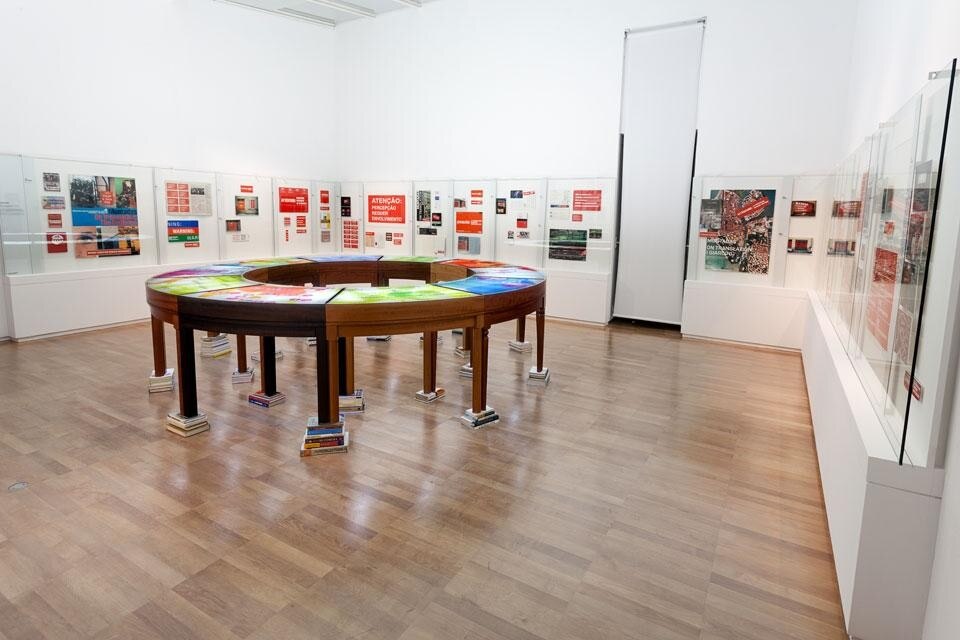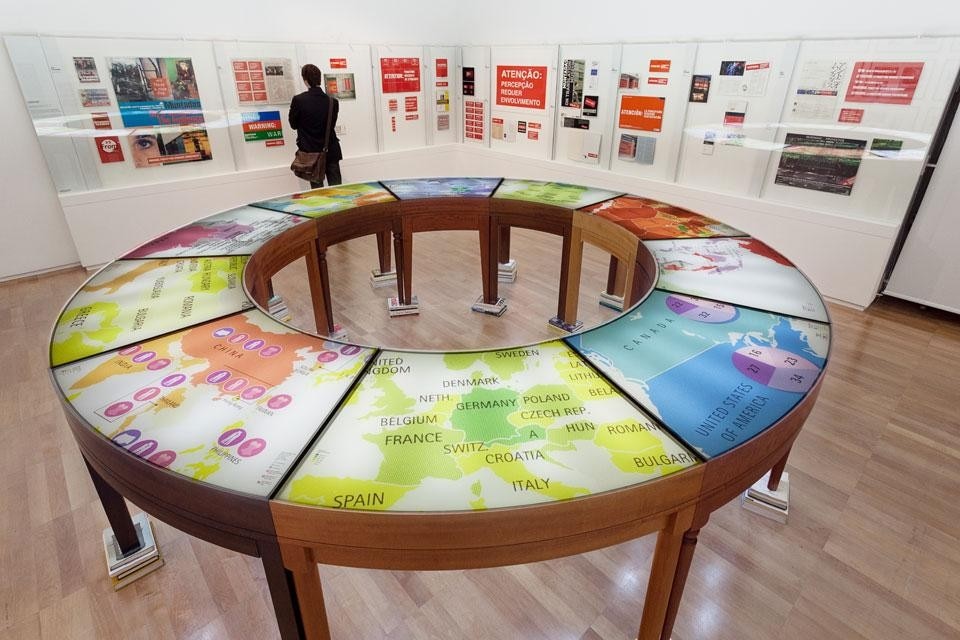The challenging task of reframing the relationship with the systems of communications and power that govern our lives has been at the heart of Antoni Muntadas' complex artistic practice since the 1970s. And so it was inevitable that his most recent show at a museum like Jeu de Paume, which is mostly devoted to photography and new media, would not imply reworking the exhibition mechanisms. The result is therefore not a retrospective in the traditional sense of the term, but rather an opportunity to evaluate and reinterpret the force of his system built in the media landscape. The suggestion is to experience (or re-experience) it in Entre/Between , much like the title.
Earlier than many artists, Muntadas defined a specific space of communications with Media Landscape. He decided to situate his research within the opaque and redesigned flow of new technologies, from their very beginning. At the time, Muntadas sought to emphasize the distortions and aporias of the today pre-historic press, radio and television by reconstituting the gestures of the nascent exercise of hyper-consumption, or the modification of our sensory experiences, in his choreographies.
Those works seem distant in time but the sensory actions are still incredibly powerful. At Jeu de Paume, the Generic Monument on display is a tautology but its scale (photographs of an electricity pylon) inside the museum is stunning: metaphysical like a shadow with surrealistic intensity. Walking through the exhibition, it is clear that a chronological interpretation of the artist's work would be futile. In fact, Muntadas rejects that approach because it would only separate the viewer from the exploration of the diverse and successive forms of technology. The dialogue between art and life cannot be expressed in the description of a time sequence; and so the low-tech of his first explorations is mixed with such recent works as the File Room of The Archive that could not exist without the Internet.
Antoni Muntadas: Entre/Between
At the Jeu de Paume, the Spanish artist's work is a constellation of experimental artistic and political practices that opens our eyes, placing us under the sign of social criticism: here is something as useful as a therapy session.

View Article details
- Ivo Bonacorsi
- 28 December 2012
- Paris

However, Muntadas' work is never a mere exercise in style but a constant political statement: from slide-show installations documenting public space in New York's Canal Street; black and white televisions with crackling emcees seen from the waist up and much white noise; and the in-progress collection of censored works.
All of the work is highly iconic, precisely because it has not been brought up to date. With its roomful of people cheering to catastrophic and generic events of our times, 1999's On Translation: el applauso , is old and as outmoded as a talk show in the Facebook era. But for this very reason it is extremely true to the topic. A 1985 piece like Subliminal is even more disturbing because it expresses the device's obsolescence. Its installation on the highly visible Times Square mega screen brings it to life today as a graphic "score" — a libretto for a litany that redeems our eyes, crucified by a tablet or smartphone screens. In today's social context, who would ever raise their eyes to look at something like that? For four decades, Muntadas has effectively focused his research on a key issue — what are we looking at? — and, of course, its paradoxes. So from video surveillance to archives, from public to private space to 1991's la ville musée that transforms everyone into voyeurs of public space, his work is a constellation of experimental artistic and political practices that opens our eyes, placing us under the sign of social criticism: here is something as useful as a therapy session. Ivo Bonacorsi
All of the work is highly iconic, precisely because it has not been brought up to date
Through 20 January 2013
Muntadas: Entre / Between
Jeu de Paume
1 place de la Concorde, Paris